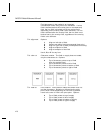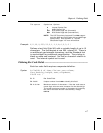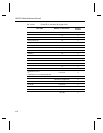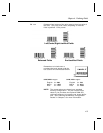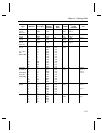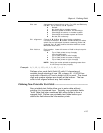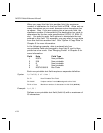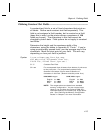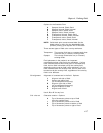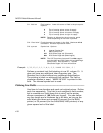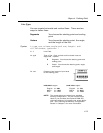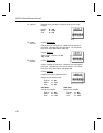
B10. text Appearance of text with bar code. For UPC and EAN only
use
0-7
. For all others, use
8
. Options:
0
Default
1
No check digit or number system
5
Number system at bottom, no check digit
6
Check digit at bottom, no number system
7
Check digit and number system at bottom
8
No text, bar code only
B11. alignment Choose
L
,
R
,
C
,
B
or
E
to align the bar code data
correctly in the field.
B
centers variable width bar codes,
which may not allow pad-character centering (Code 128,
Code 39, etc.)
E
right justifies variable width bar codes.
Maxicode must use
L
.
B12. field rot Field rotation. Lower left corner of field is the pivot point.
Options:
0
Top of field points to top of supply
(Use for Maxicode)
1
Top of field points to left of supply
2
Top of field points to bottom of supply
3
Top of field points to right of supply
NOTE:
Serial bar codes printed at speeds greater than
2.5 IPS may not scan properly.
Example B,3,12,V,150,40,1,2,80,7,L,0 p
Defines a bar code field (field #3) with 12 characters of
variable length starting at row 150, column 40. A UPCA bar
code with a density of 2 and a height of 80 is used. The check
digit and number system are shown at the bottom. The bar
code is left aligned without any field rotation.
Defining Non-Printable Text Fields ––––––––––––––––––––––––––––
Non-printable text fields allow you to enter data without
printing it in its entered form. Typically, non-printable fields
"hold" data that later combines with other fields to form a
merged field. Define non-printable text fields before you
define the field where the information prints.
Chapter 4. Defining Fields
4-13




